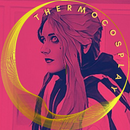Introduction: Creating Armor With Worbla
Worbla's Finest is a material that is hitting the world by storm! Easily manipulated, heat activated and as hard as plastic when cool - there is little else in this world that meets its usability. For this project, I will discuss creating the shoulder armor from the Diablo 3 Demon Hunter build I completed this past spring.
Here are the tools/materials you will need:
- A strong pair of shears (I use titanium)
- An Exacto blade
- 2mm EVA Foam
- 1 medium to large sheet of Worbla (purchase here: www.cosplaysupplies.com)
- Poster Board
- A marker
- A heat gun (or the ability to heat the Worbla - I hear warm water works as well)
- Paint brushes and Paint
- Mod Podge Clear Sealant
- A Pencil
Step 1: Step 1: Getting Your Patterns Right
Everything starts with a pattern; whether you draw it yourself or use a program like Pepakura, a pattern is necessary to ensure consistency (especially with symmetrical pieces). Start off by drawing or tracing your pattern onto a piece of poster board. Cut out the pattern and tape or pin it together. How does it look? Is it the right size? You want to make sure you have the dimensions correct before you cut out the foam.
With the dimensions adjusted, take your new pattern and trace it onto your 2mm EVA foam (aka craft foam). Once your foam is cut out repeat the "testing" steps. Make sure it looks right and fits well. Now that you are positive about the fit trace your pattern onto your Worbla sheet (make sure the Worbla pattern is a little bigger than your foam pattern) twice. Why twice? Well, I use the sandwich method which means for every one piece of foam you need two pieces of Worbla.
If you don't have the funds for this method you are welcome to cut out one piece of Worbla a bit bigger than your pattern and simply fold over the edges when you get to the building phase (which is discussed in the next step).Foam
Step 2: Step 2: Getting Hot With Worbla
Worbla is a thermoplastic: what does that mean? Simple: it becomes soft/malleable when heat is applied to it. In it's heated state, Worbla can be manipulated as easily as clay (just be careful, it can burn you). Take your heat gun and a piece of Worbla - evenly distribute the heat on the lowest setting until the Worbla is bendable. Now take your foam and place it atop the heated piece of Worbla; then place the second piece (for those only doing one piece now is the time to start folding the Worbla over the foam gently) atop the foam.
Once you have made a "sandwich" apply heat with your heat gun until the Worbla settles nicely over the foam. NOTE: DO NOT APPLY HEAT TOO CLOSE TO THE WORBLA AS IT WILL BURN. Not only will it burn it becomes so hot that it can fuse with anything close by so be extremely careful and take your time.
Let your Worbla and foam settle for 5 minutes before bending to a shape you like. Once you have completed one section "rinse and repeat". If you make a mistake don't worry! Worbla is easy to fix. You may get air bubbles; if so, heat the entire section, cut open the side until the foam is exposed and use a flat object to push the air out. With the air gone, heat the cut section and seal it up! Good as new :)
Step 3: Step 3: Details N'Paint
With your base piece built it's time for detail! I used nylon rope and rolled hot Worbla over it then applied the rope to the edges of my piece. As Worbla is tacky, you can adhere it to itself and other pieces rather easily. No glue, little mess. Use scraps of Worbla and mush them together, roll them out, sculpt a happy little skull - whatever you can imagine you can create!
For priming Worbla here are a few suggestions: Plasti-Dip (2 thin coats), Mod Podge (4-5 coats), watered down Wood Glue (as many coats as it takes - be sure to sand afterwards) or a heavy duty Spray Paint Primer/Filler. There really isn't a right way - it just depends on how you want your armor to look.
I use a mixture of Spray Paint Primer/Filler, Spray Paint color and Acrylic paints. Don't be afraid to explore - starter kits or sample materials are great for your first armor set. You can always correct mistakes later with a more permanent/preferred style/solution.
Step 4: Step 4: Seal It and Wear It!
Armor will suffer wear and tear. To help it keep its luster give it two coats of a clear, acrylic sealant. I use Mod Podge Matte Finish but there are a number of finishes out there.
And you're done! Wear that armor with pride; you accomplished your goal!
Good luck!

Participated in the
Teach It! Contest Sponsored by Dremel

Participated in the
Hand Tools Only Contest

Participated in the
Halloween Costume Contest











